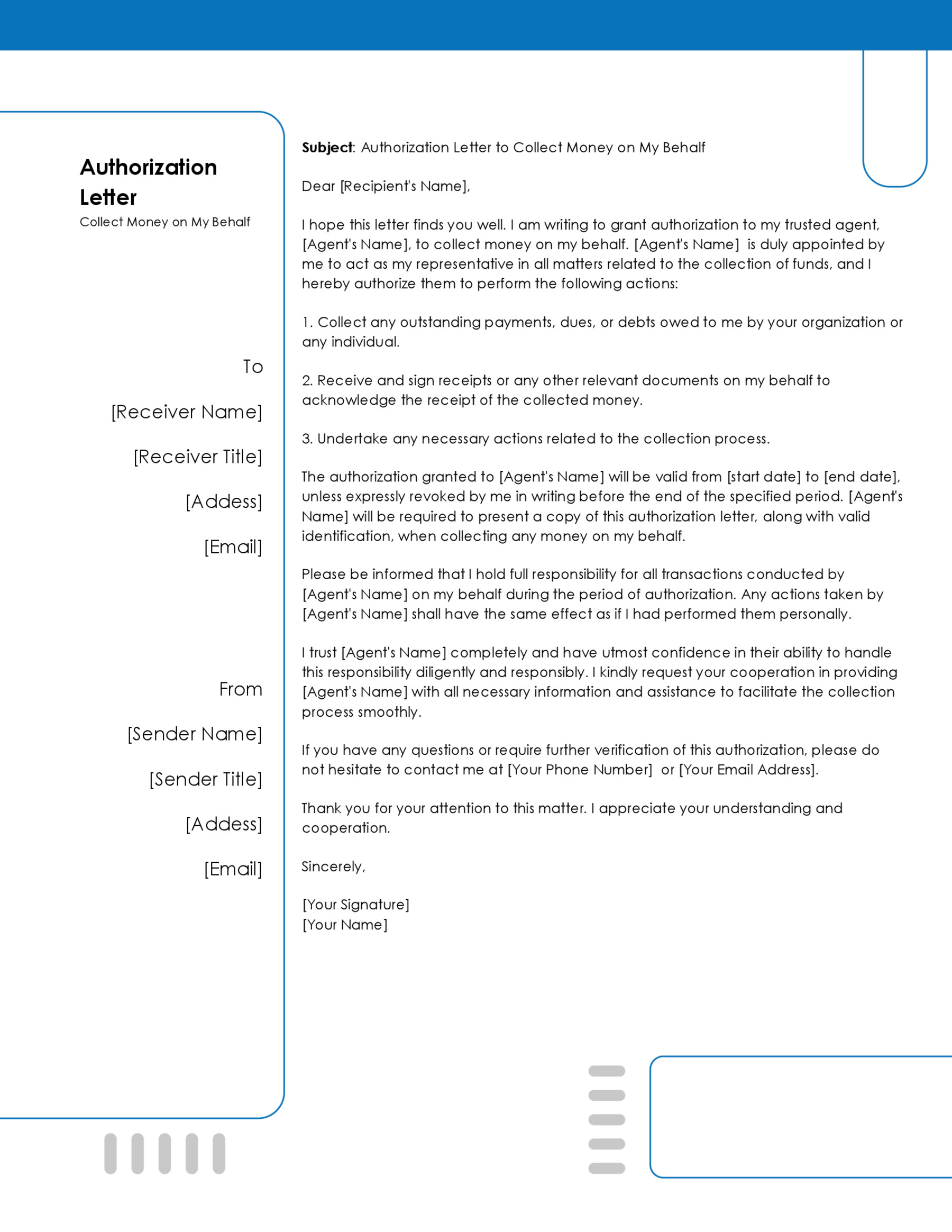An Employment Verification Letter is a document that an employee requests from a current or previous employer.
It is used by government agencies, mortgage lenders, or prospective landlords to confirm that the employee has worked at the specified company. The letter gives details such as the current employer, employees’ full name, the job position in the organization, the starting date of their employment at that organization, and payment details and employment status.
The letter can be used by an individual when seeking an employment opportunity in another organization, by landlords when letting property to an individual, or by financing departments, as they verify if the individual will be able to pay their loans.
Free Templates and Samples
Whether you are verifying employment for a current or former employee, our templates provide a standardized format to ensure accurate and professional documentation. By utilizing these pre-built templates, you can easily customize the letter to include relevant information such as job titles, dates of employment, and salary details. Best of all, these templates are available for free download, allowing you to access and utilize these resources without any cost. Simplify the process of verifying employment with our professionally designed templates and provide a reliable source of information to assist in various employment-related matters.
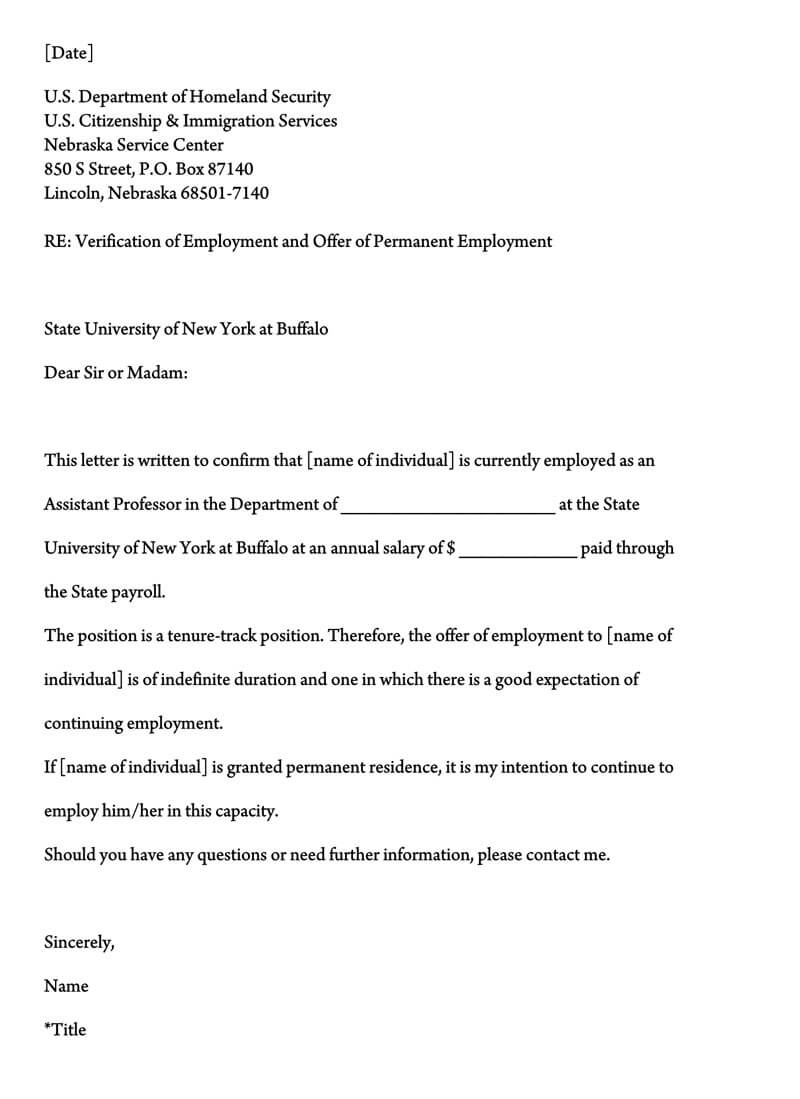
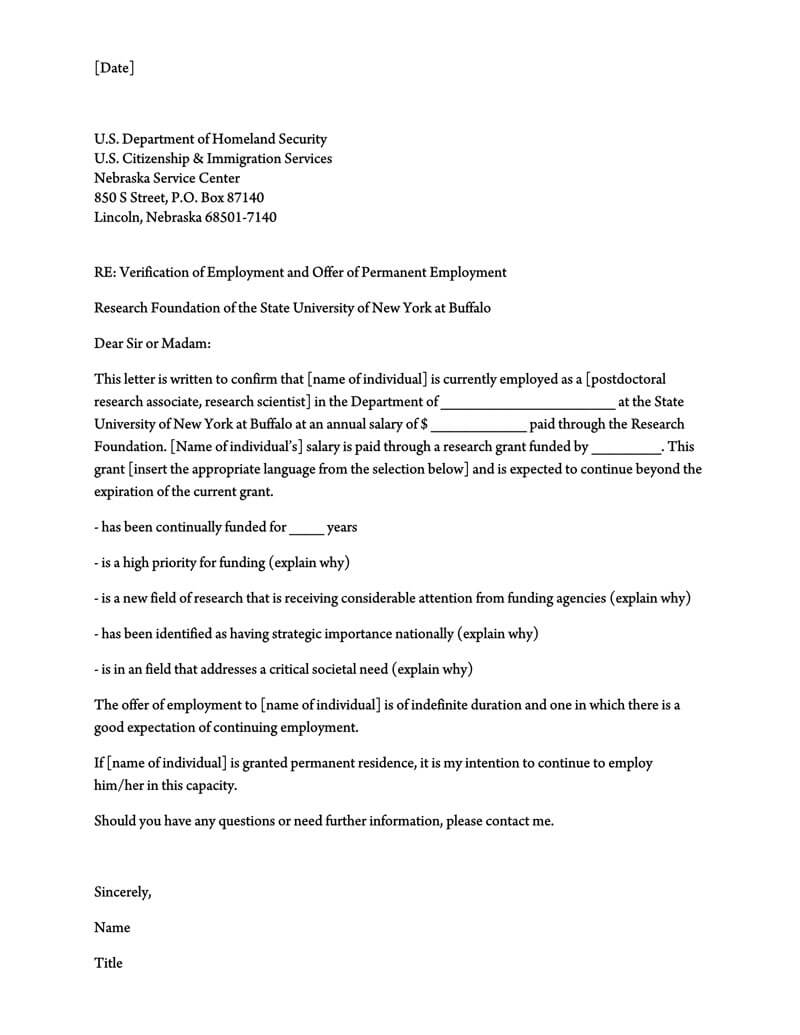
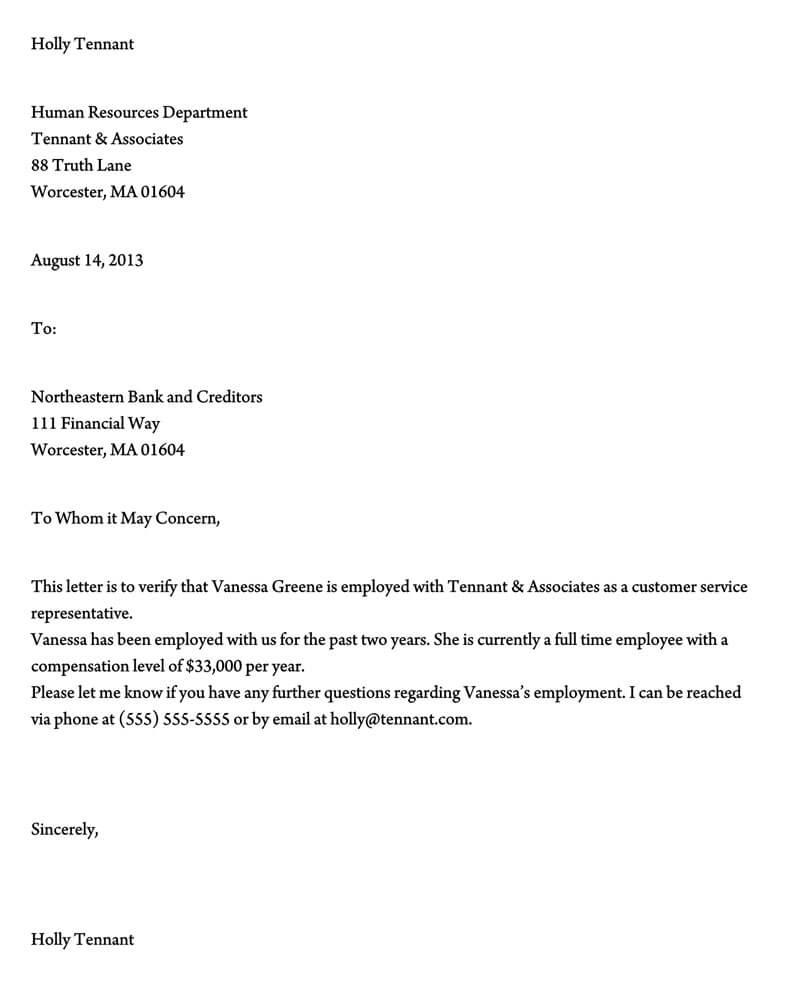
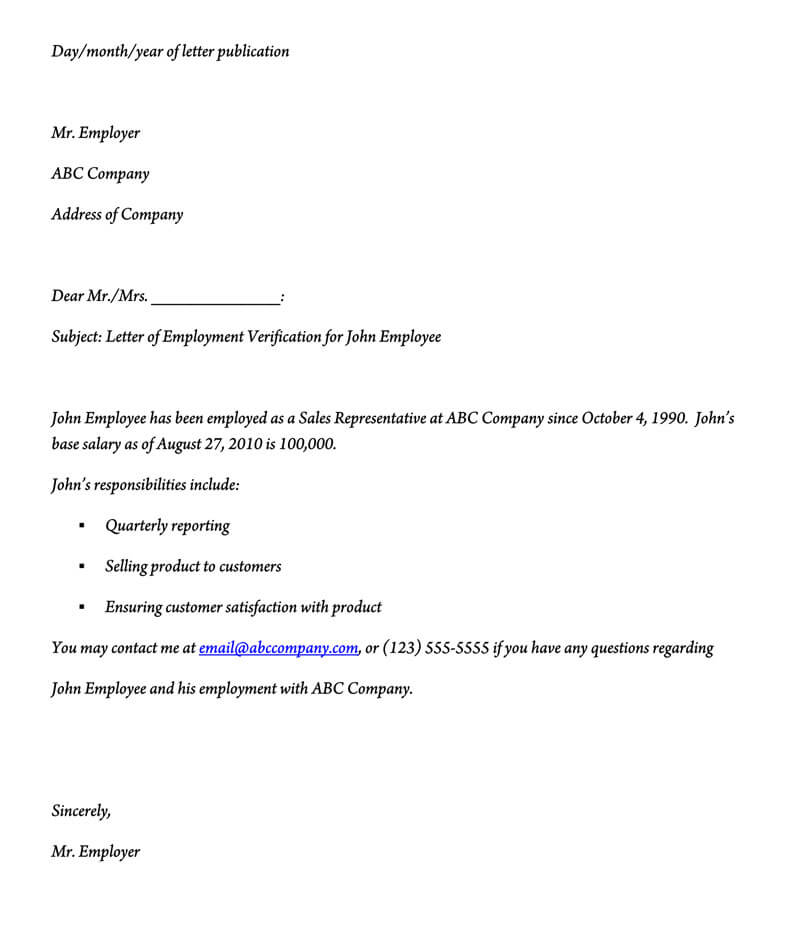
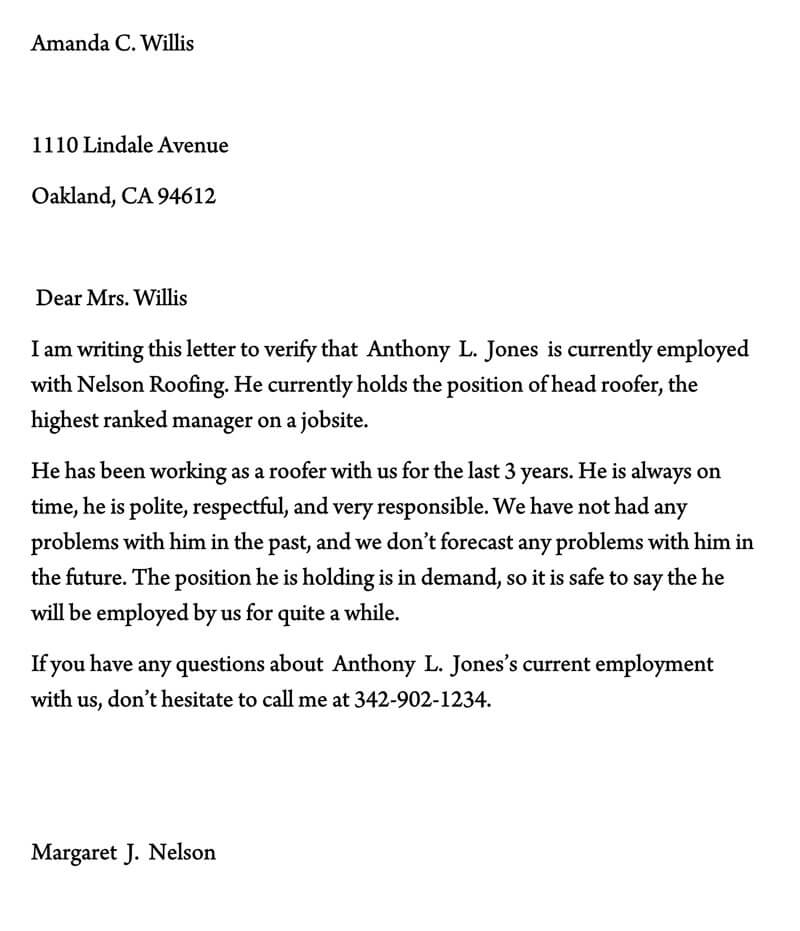
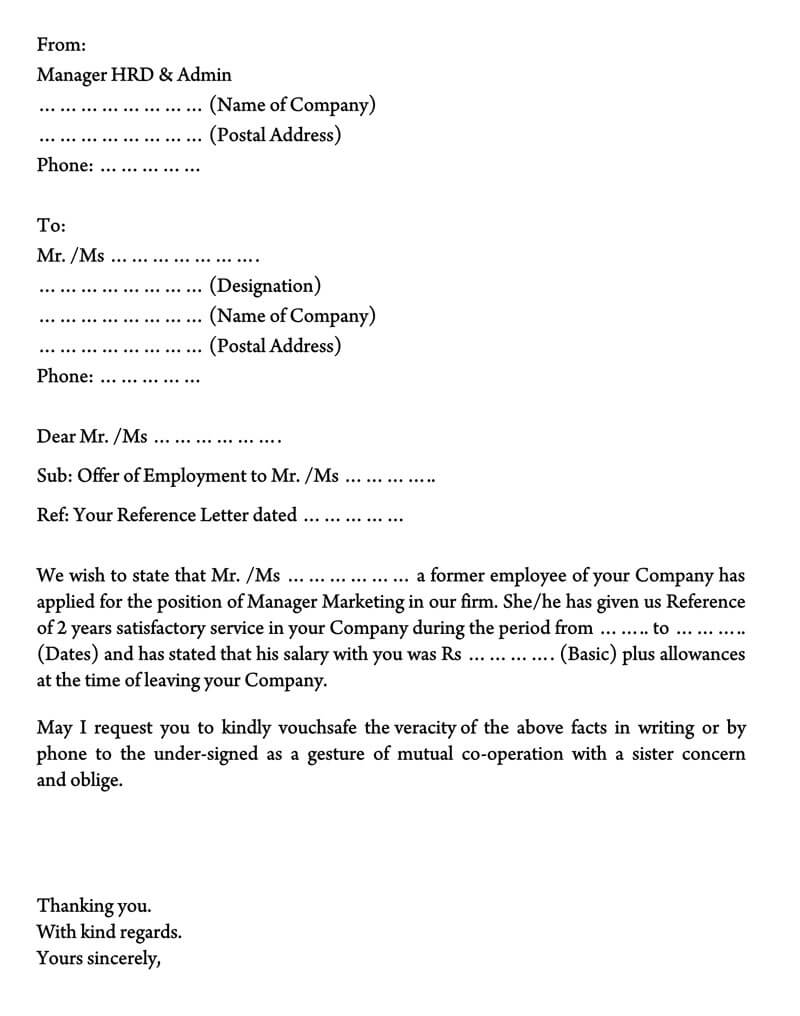
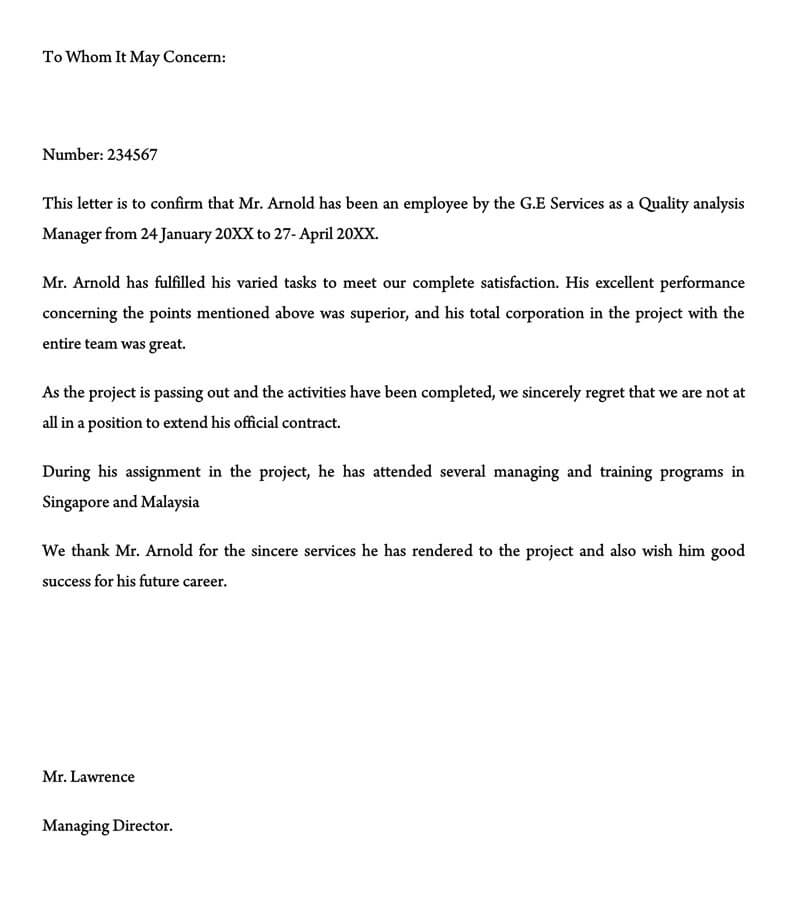
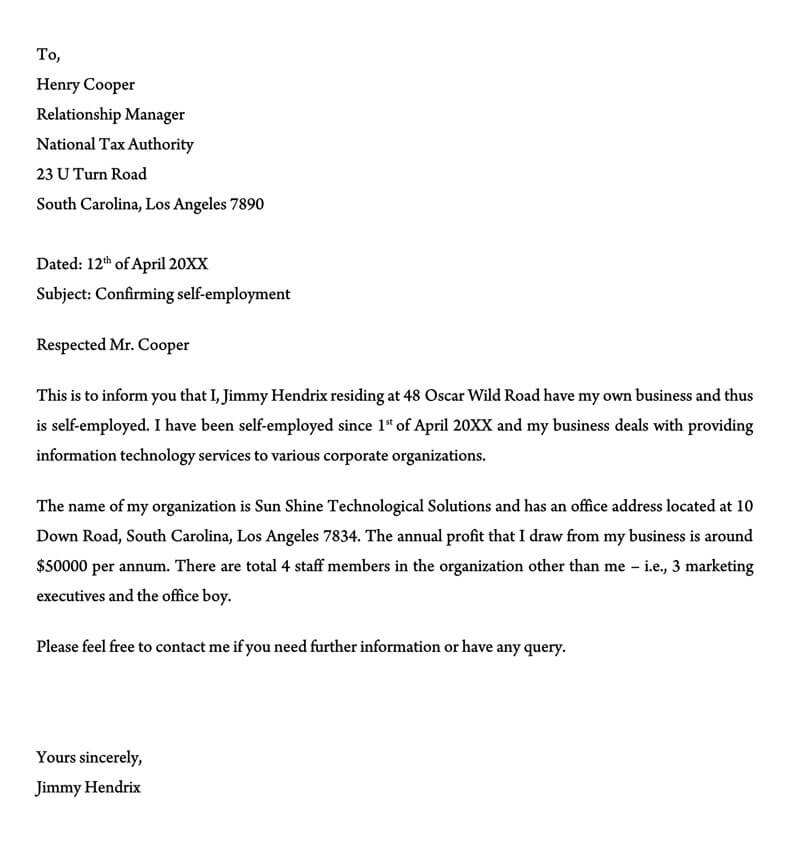
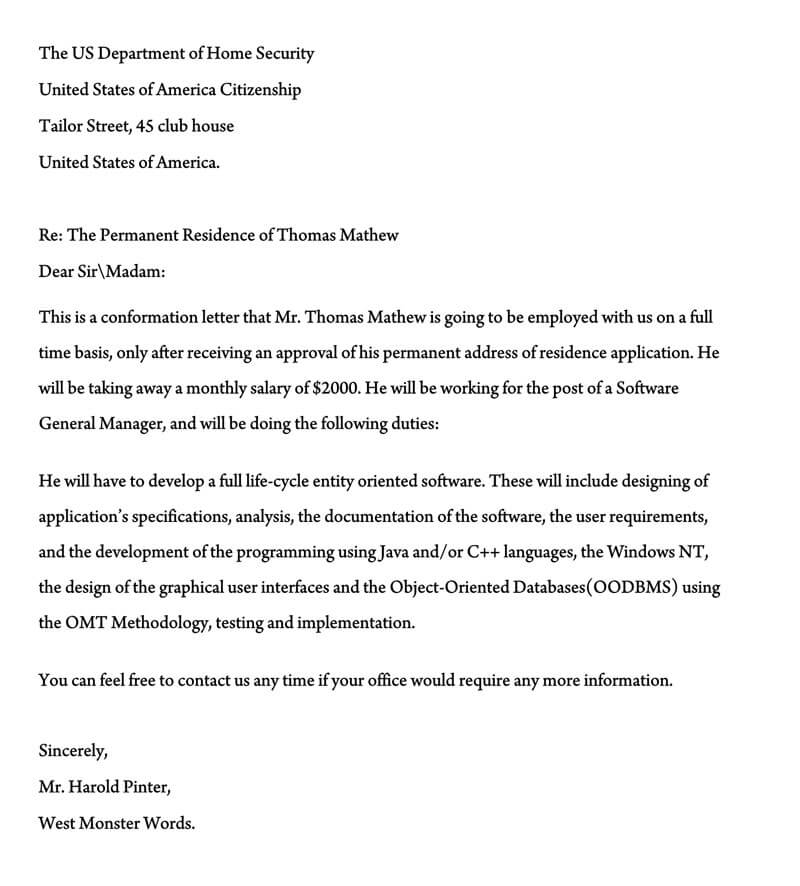
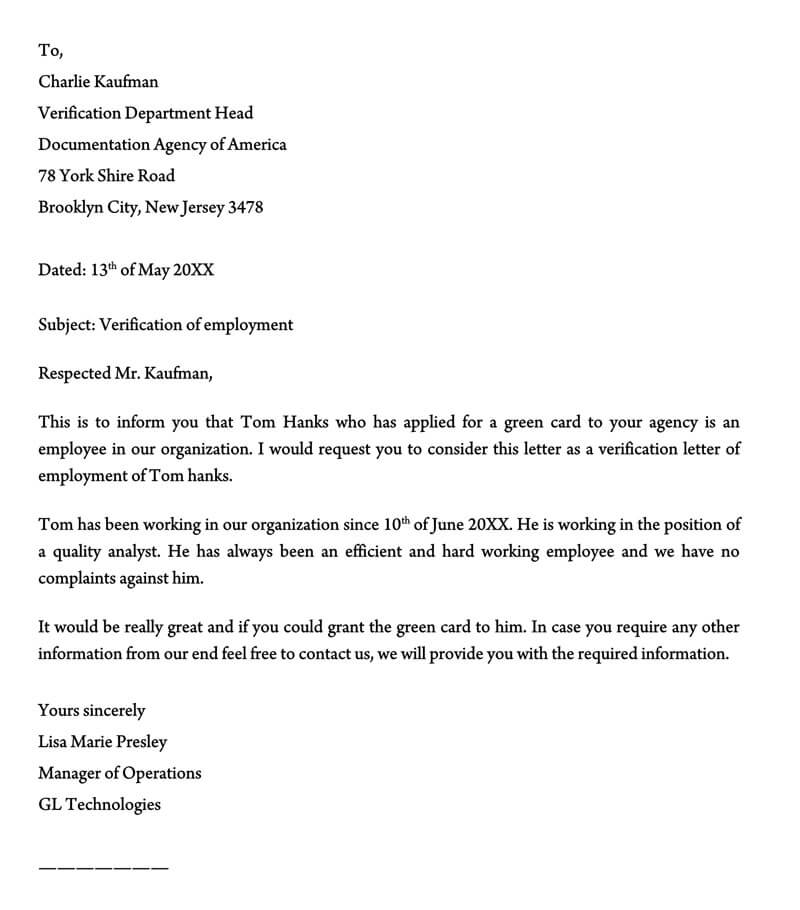
Employment verification letter vs. reference letter
The verification letters have a great similarity with reference letters. However, their main purpose is to prove that the individual is an employee of a given organization, and it is only written by the employer or human resource manager. Alternatively, a reference letter is a document that is written to recommend an individual to a job opportunity by stating their capabilities and values, which are in line with the requirements and can be written by either co-workers or friends.
Employment verification vs. background check
Background check varies with employment verification in that it focuses on a wider range of an individual’s life, such as criminal history, previous addresses, previous employers, or schools attended. However, its main aim is to acquire the history of an individual while an employer writes employment verification to confirm that an individual is or was an employee at that specific organization.
Employment verification vs. SSN verification
Social security number verification is important and confidential information that cannot be disclosed without the consent of the employee. If the employee agrees for their social security number to be added to the letter, then write it.
How to Respond to the Request?
An effective response provides all the necessary information needed in the letter to avoid unnecessary calls for clarifications and revisions.
Writing the letter may be tasking given that there are specific considerations you may be expected to adhere to including the following:
Know your company’s policy
As an employer, once you receive the letter request, it is essential to confirm if the company policy allows you to write such a letter. Some verification letters are sent in as a template for you as an employer to fill in the required details. Therefore, it is important to follow your organizations’ policy and understand if you are supposed to use your letter or just complete details on a template letter.
Stick to facts, don’t give opinions
When writing a verification letter, ensure that you stick to facts about the employee which are documented, and in the case of a conflict you have records that support the details provided. This is an important aspect as it helps protect the organization and the employer from possible legal trouble caused by the use of undocumented information or opinions.
Don’t send documentation
The letter can be requested both by the employee and another company. Thus, documents such as employees’ records or employment contract letters, or any other personal record should not be provided to any other party. This causes infringement of personal rights and may lead to the suing of the organization or employer.
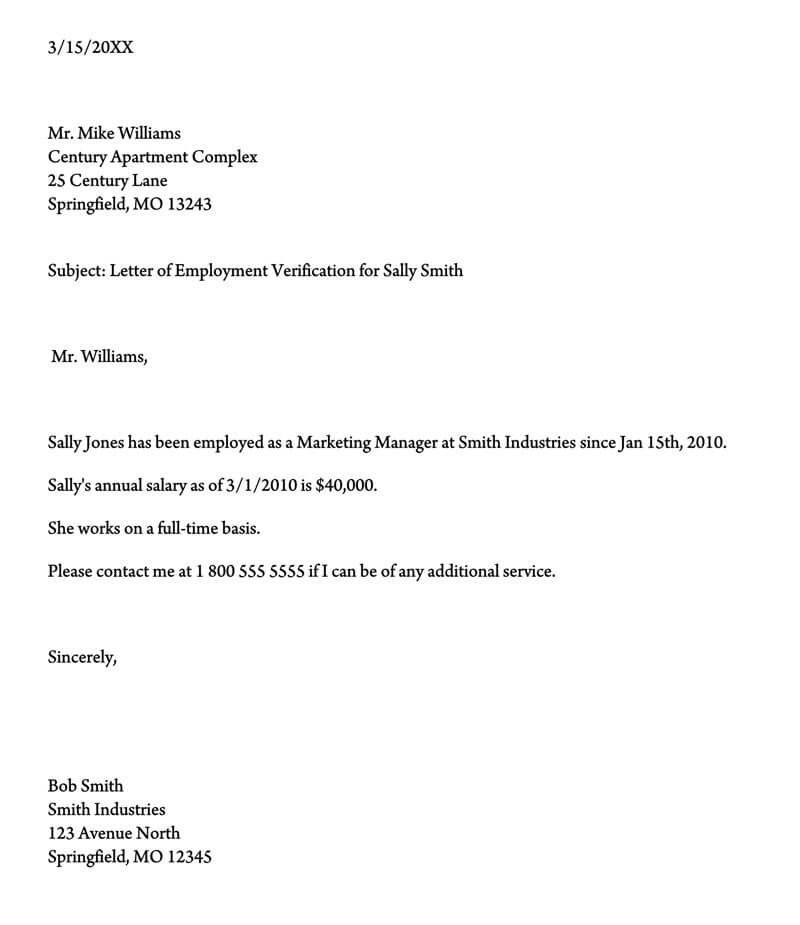
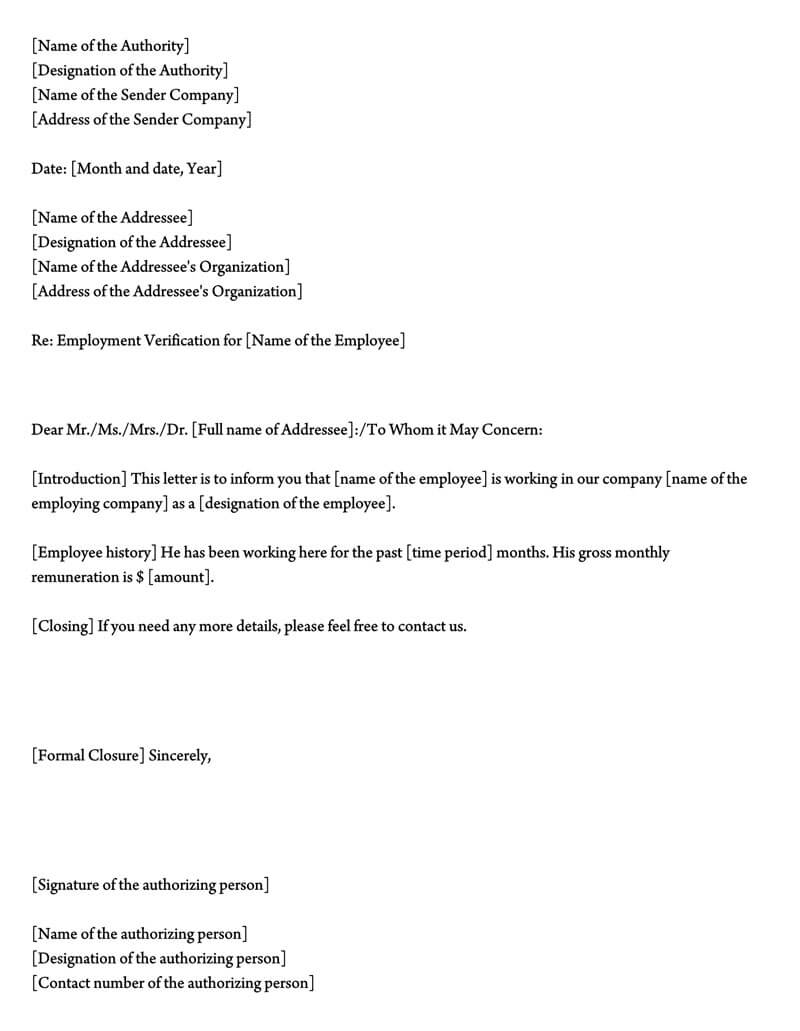
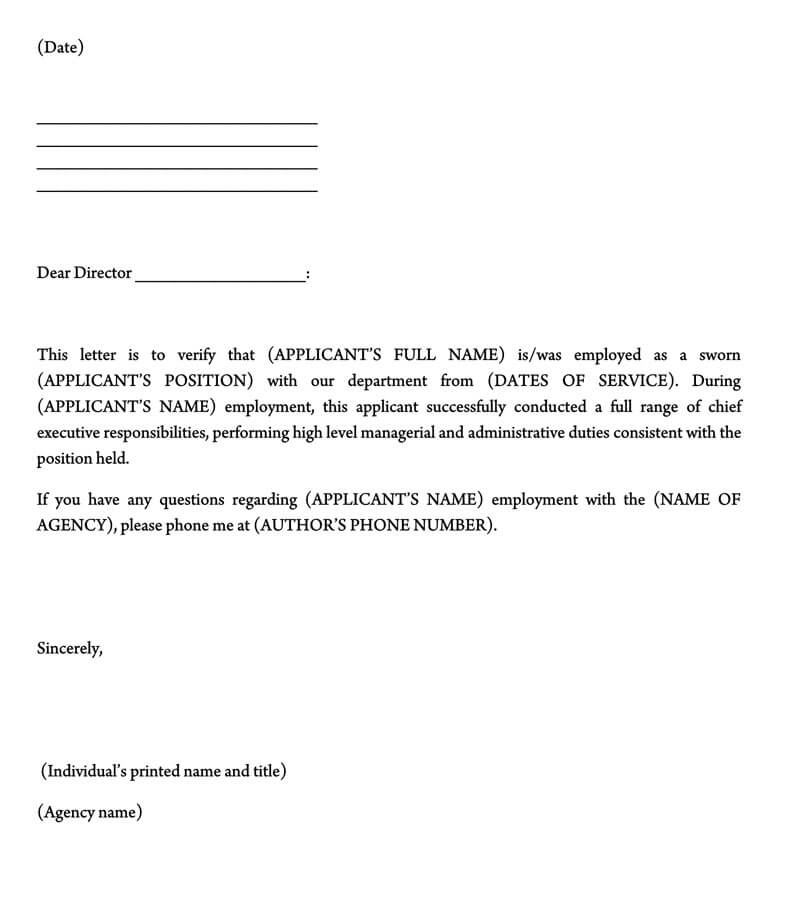
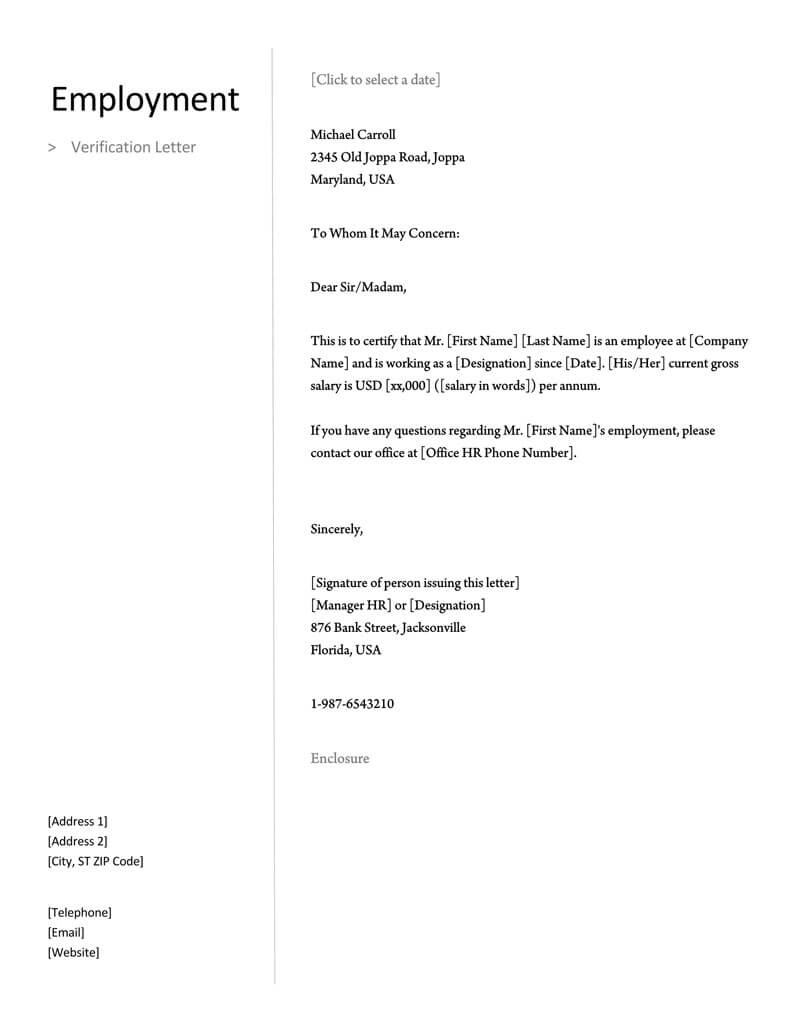
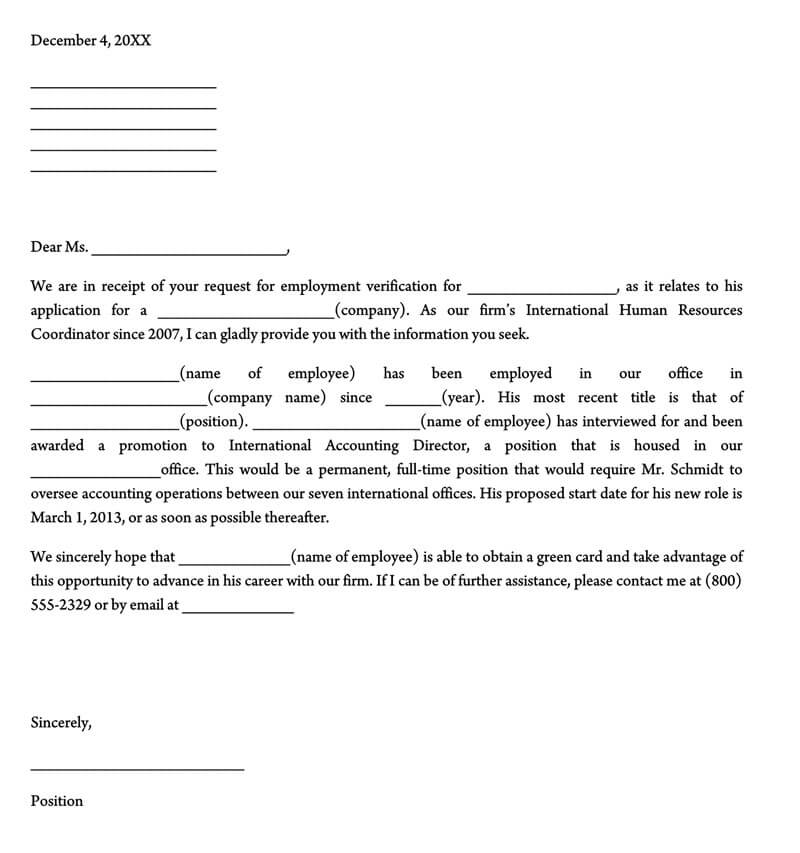
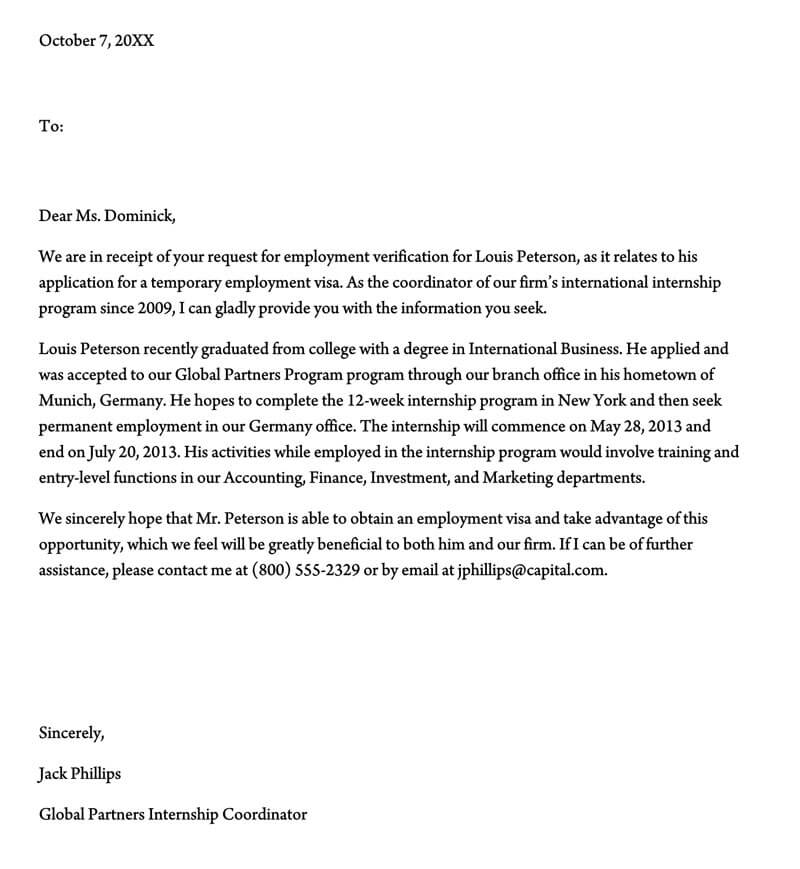
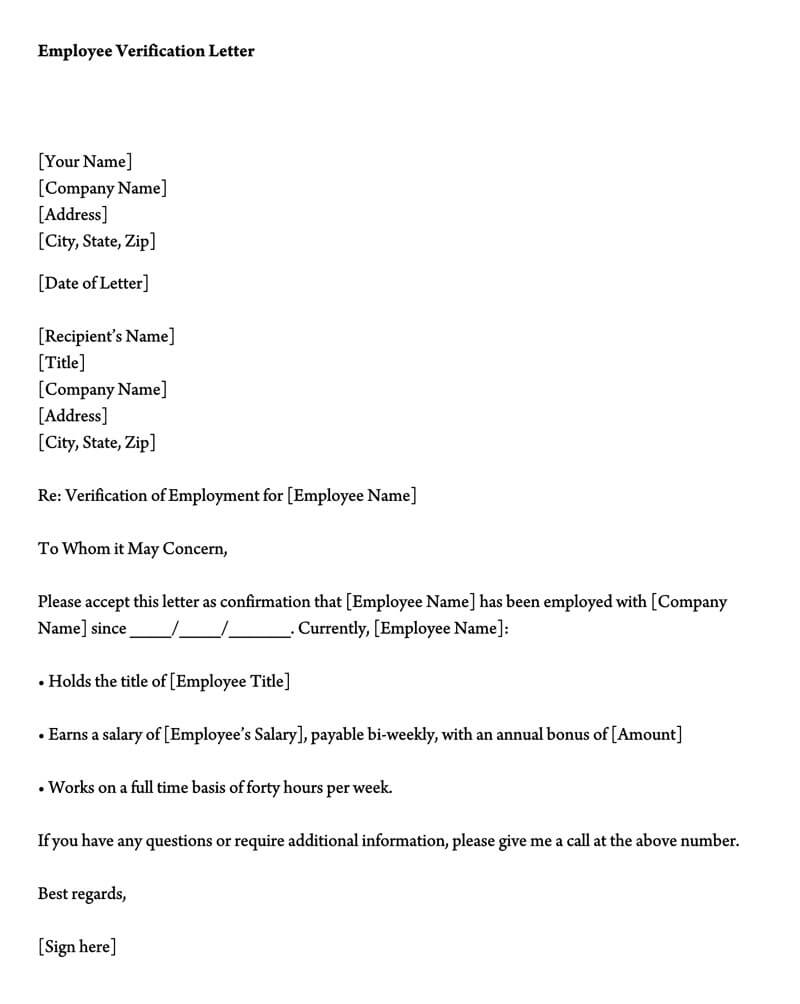
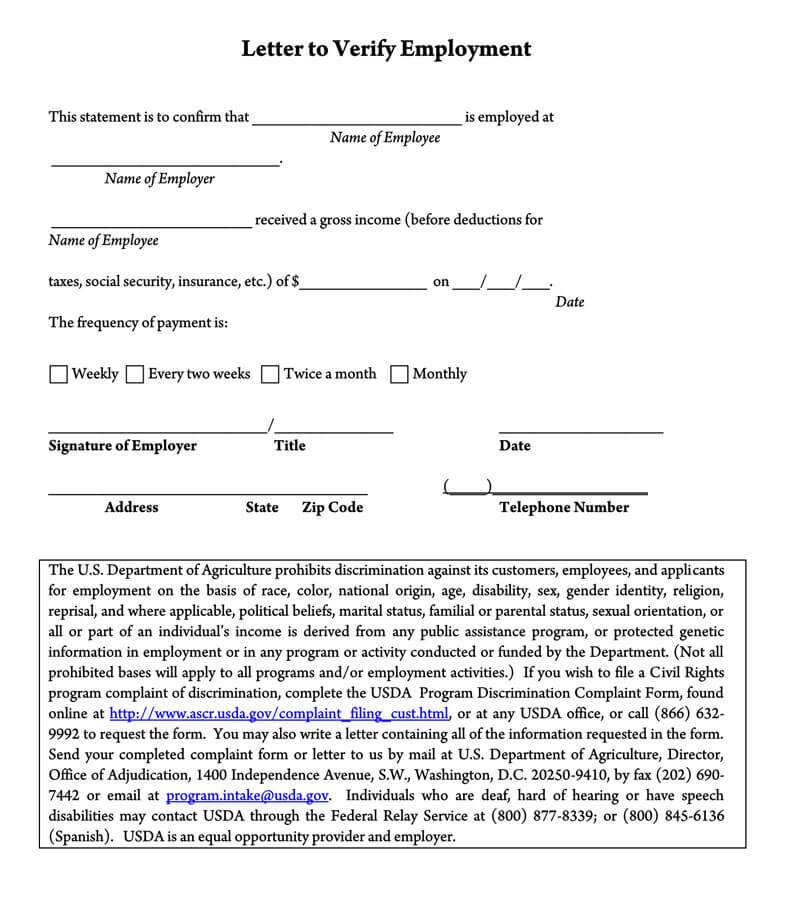
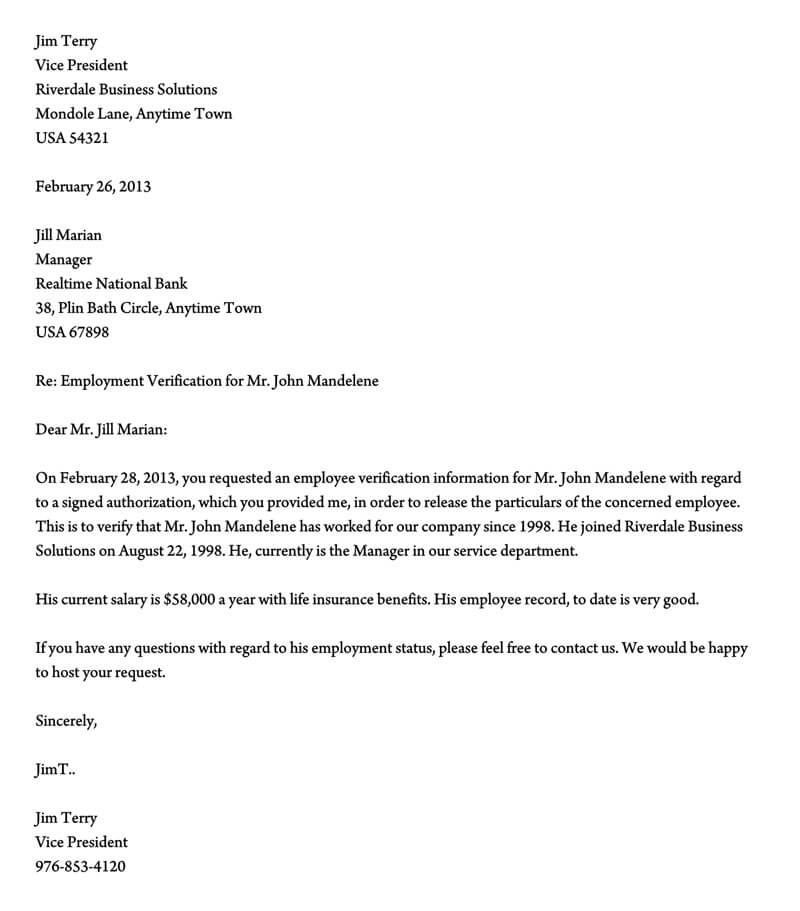
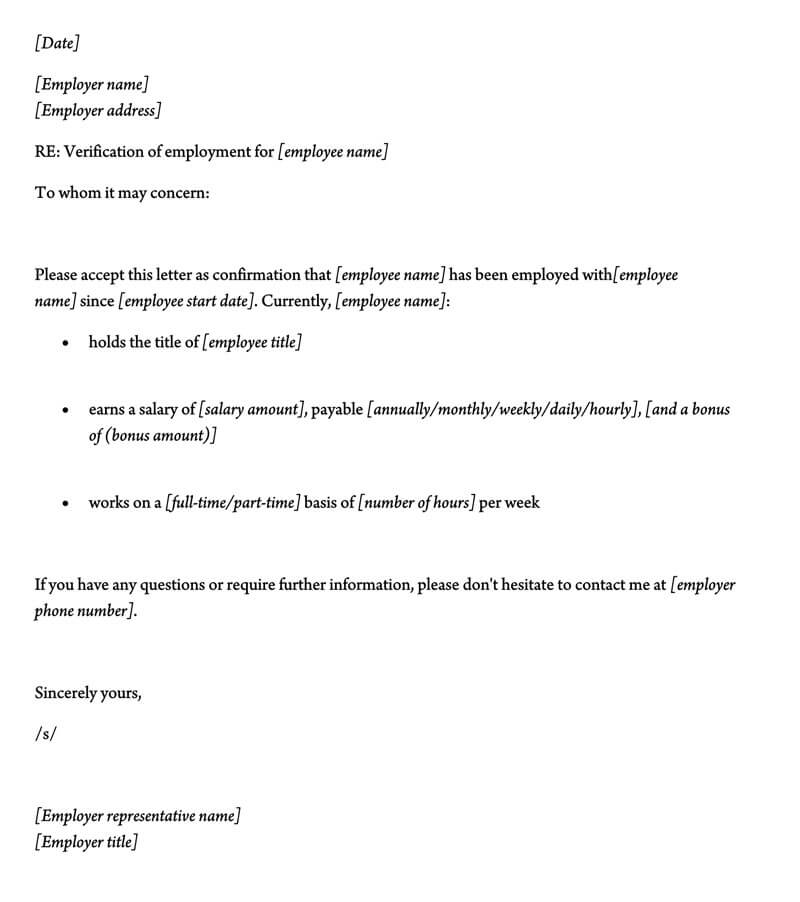
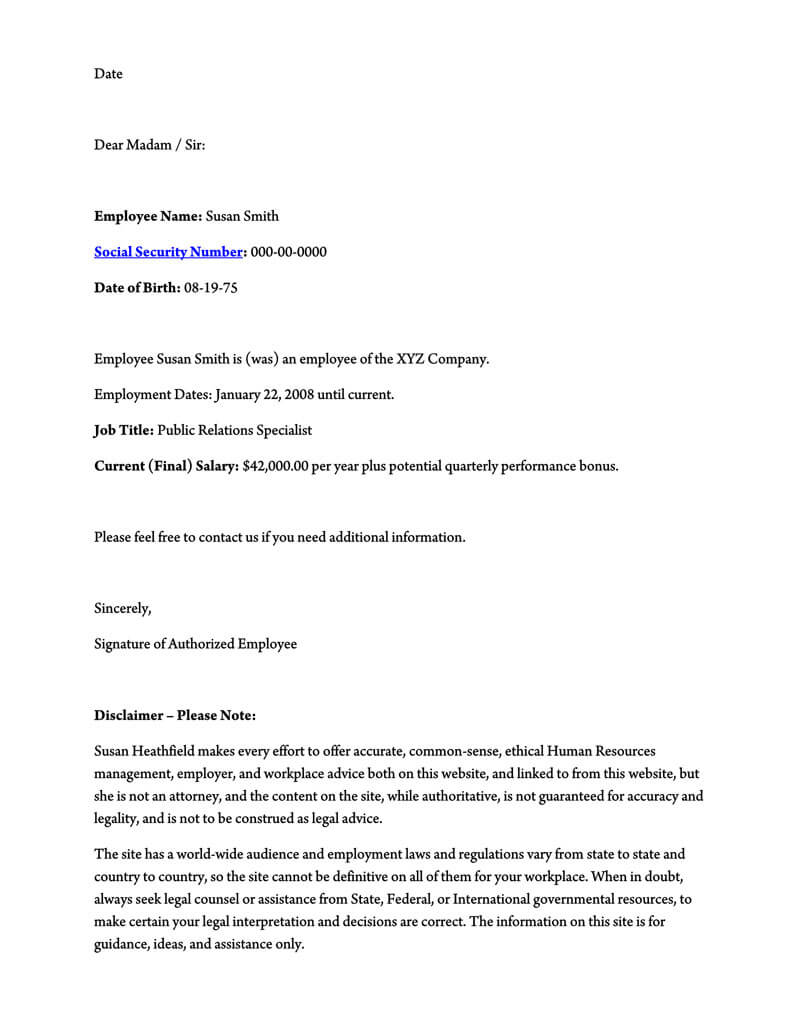
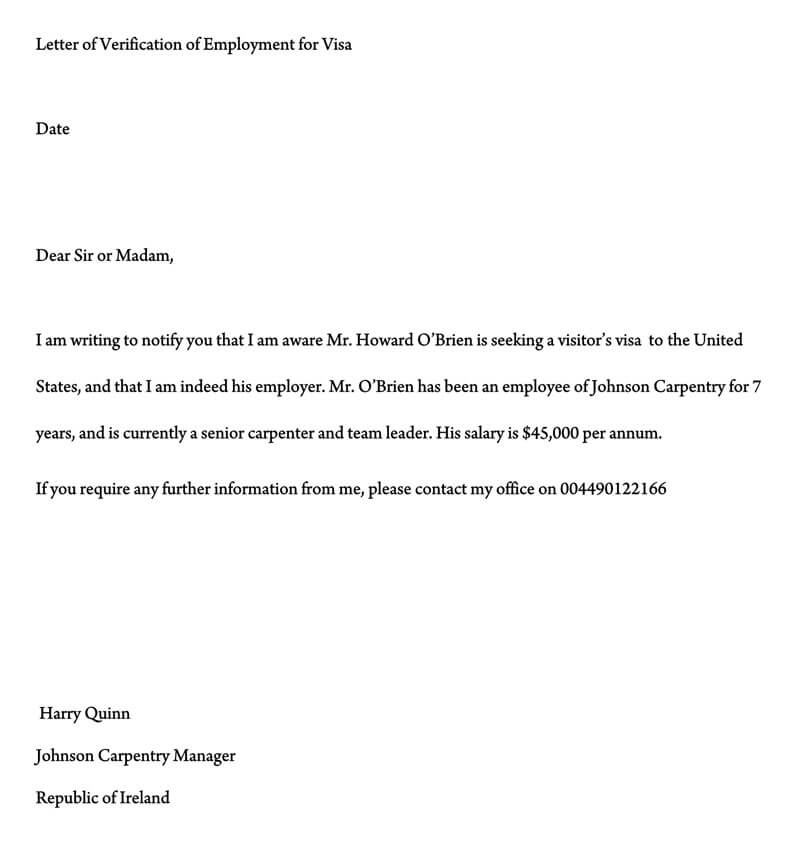
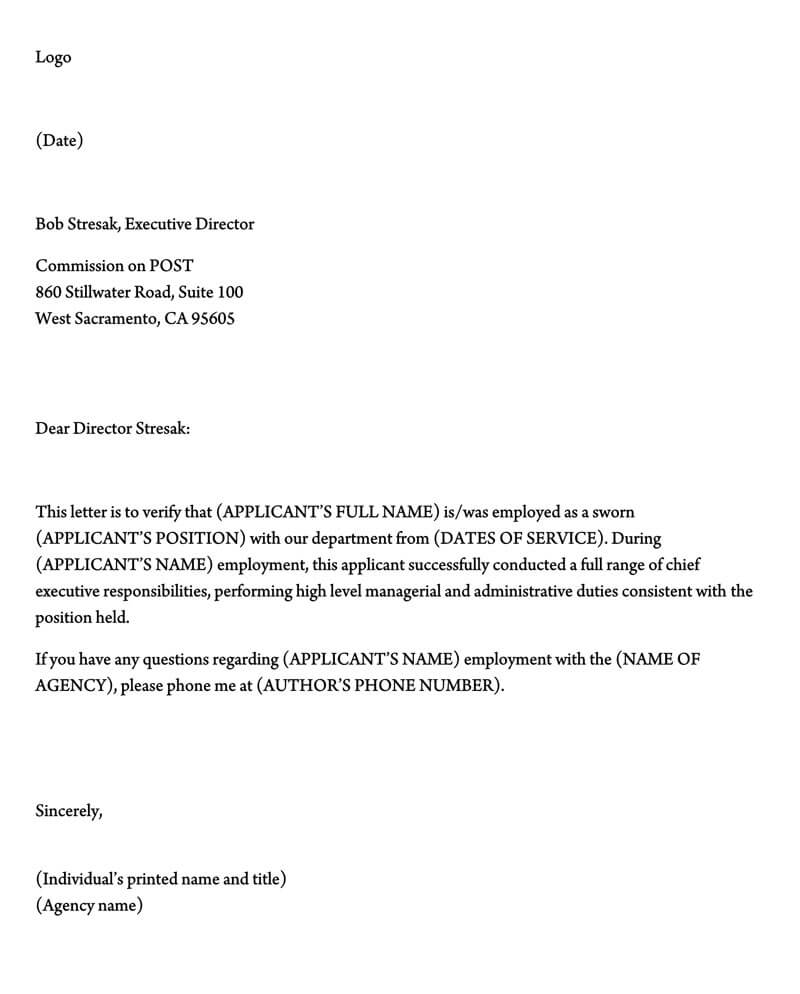
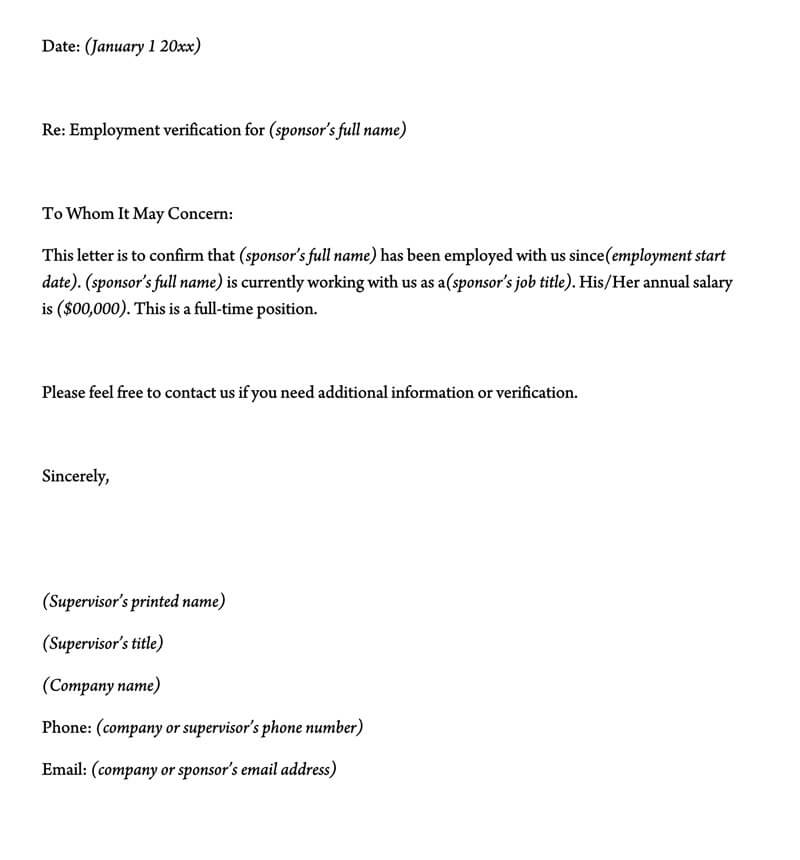
How to Write an Employment Verification Letter
An employment verification cover letter should contain the following details:
Employers’ personal information
Employers’ personal information in a verification letter is crucial as it helps in showing the authenticity of the employer as well as their physical location.
The details required under employers’ personal information include:
Name
The employers’ full name should be written at the top of the verification letter. It should be the name of the organization providing the letter.
Street address
The street address should be the current location of the business or the organization. This information is important as it helps in showing that the letter is authentic.
City
Provide the name of the city where the business is located.
State
The state where the organization is located is essential as different states have different procedures and policies for writing athe letter.
Zip
The zip code of the organization should be indicated in order to distinguish the organization from any other which may have a similar name.
Employee’s information
Employees’ personal information is essential in the letter and it includes the date of joining the organization, type of employment, salary details, payment frequency, and hours worked per week.
Below is a discussion of these details.
Name and date of joining the company
Write the full name of the employee and the date that they joined the company. This information should be in line with the companies’ documents to avoid contradictions.
Type of employment
Specify the type of employment the employee is doing and also give details about their position and some details on the job description. Give a specification if the employee works on a full time or part-time basis
Information about salary and bonuses(If asked)
Salary information is a critical aspect that should not be written on the letter due to privacy issues. If the employee requests salary and bonus details to be indicated, it is necessary to add the information to the verification letter.
Payment frequency
Various payment frequencies are used, such as monthly payments, bi-monthly payments, and weekly or daily payments. Ensure you indicate on the letter the payment frequency used for this specific employee.
Hours worked per week
On the letter, indicate the hours the employee worked in a week and ensure the details match those on the records.
Wage
On the employee verification letter, indicate the wage or the constant amount of payment the employee receives before adding bonuses or other rewards.
Employment status
On the verification letter, indicate if the employee is still working at your organization or if he/she is no longer part of the organization.
Employer’s signature
Add your signature at the end of the letter, printed name, and a description of their business title to validate the document.
note
It is recommended to learn about your state laws for employment verification before sending the letter.
Employment Verification Letter Samples
In this section, you will find three helpful employment verification letter samples, serving as practical guides to assist you in crafting your own letters for various employment scenarios.
Sample Letter 1: From a Current Employer
To Whom It May Concern,
This letter is to verify the employment of Emily Johnson, who has been working with us since March 15, 20XX. Emily Johnson is currently employed on a full-time basis as a Software Engineer, primarily responsible for developing and maintaining our core software products.
Our records show that Emily works approximately 40 hours per week. The payment is made on a bi-monthly basis, with a regular wage of $85,000 annually before any bonuses or additional rewards.
Please note that Emily Johnson is currently an active employee at our organization.
Should you require any additional information, please feel free to contact us at hr@zenithtech.com.
Sincerely,
John Smith
Human Resources Manager
Zenith Technologies Inc.
hr@zenithtech.com
Sample Letter 2: From a Previous Employer
To Whom It May Concern,
I am writing to confirm that Mark Anderson was employed by Harper & Associates Consulting from July 1, 20XX, to December 31, 20XX During his tenure, Mark Anderson was employed on a full-time basis in the role of Marketing Specialist, where he was tasked with overseeing digital marketing strategies and campaigns.
Mark typically worked 35 hours per week, and the payment frequency was monthly. Mark Anderson’s regular wage was $70,000 annually.
Please note that Mark Anderson is no longer employed with our organization as of December 31, 20XX.
For further inquiries, please contact us at contact@harperconsulting.com.
Best Regards,
Sarah Lee
Director of Human Resources
Harper & Associates Consulting
contact@harperconsulting.com
Sample Letter 3: From a Current Employer with Salary Details
Dear Sir/Madam,
This letter serves to verify the employment of Carlos Rodriguez, who joined Bright Future Education Center on August 10, 20XX. Carlos Rodriguez holds the position of Mathematics Teacher and is employed on a full-time basis, working an average of 30 hours per week.
As per the employee’s request, we are disclosing that the salary for Carlos Rodriguez is $50,000 annually, with a payment frequency of monthly. Additionally, Carlos is eligible for performance-based bonuses, typically amounting to up to 10% of his annual salary.
Please be advised that Carlos Rodriguez is currently an active employee at our company.
For any additional information, please feel free to reach out to us at admin@brightfuture.edu.
Yours sincerely,
Jessica Martinez
Principal
Bright Future Education Center
admin@brightfuture.edu
Key Takeaways
The sample employment verification letters are effective due to their clear format, comprehensive content, and professional tone.
Key features include:
- The tone in the letters is objective, focusing on factual information about the employee’s tenure, role, and employment terms. There’s no subjective assessment or personal opinion, which adds to the credibility of the information provided.
- The letters open with a direct statement of intent to verify employment, making the objective clear to the recipient.
- They include essential details like the employee’s full name, employment duration, job position, and description, providing a clear context of the employee’s role and tenure.
- Information about the type of employment, working hours, and payment frequency offers insight into the employee’s work schedule and financial stability.
- Salary details are included only upon request, respecting privacy and relevance to the recipient’s needs.
- The letters specify whether the employee is currently working or is a former employee, crucial for the recipient’s understanding.
- Each letter ends with the writer’s contact details, offering a point of contact for further inquiries.
How to Format an Employment Verification Letter
If you’ve ever written a formal business letter of any kind, whether it is a letter of interest or a letter of recommendation, you’ve written in the same format that you will need to write the letter. The letters should be written utilizing the formal business format.
This will include:
- A heading that includes your contact information.
- The date you are writing the letter.
- The contact information of the person to whom you are writing (if known)
- A formal greeting (If you do not know who you are writing to.)
- A brief overview of the information that has been requested (Most importantly, the dates that the employee worked for you or the company you represent.)
- Your signature (If you are printing the letter, make sure that you sign it manually rather than just leaving the typed signature!)
Keep these letters concise! It is likely that the person that requested the letter has much to go through. Provide the essential information and finalize it. Make sure that you have included all information that was requested and be professional! You’ll find you have completed this letter in no time!
Sample Employment Verification Letter Formats
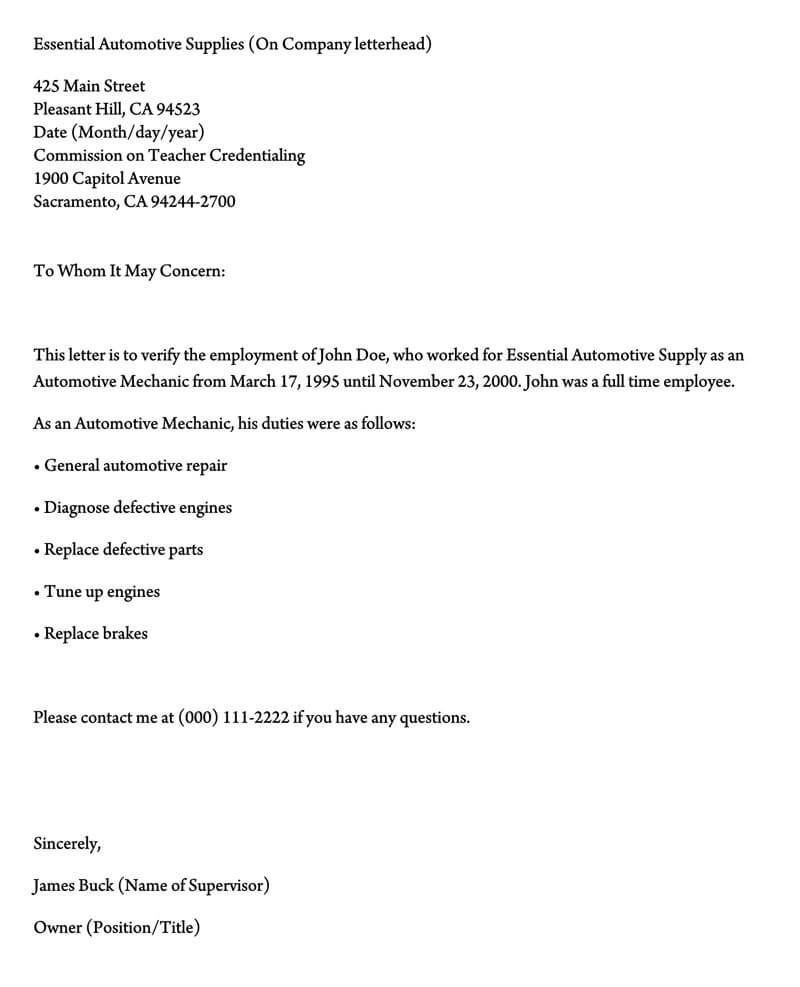
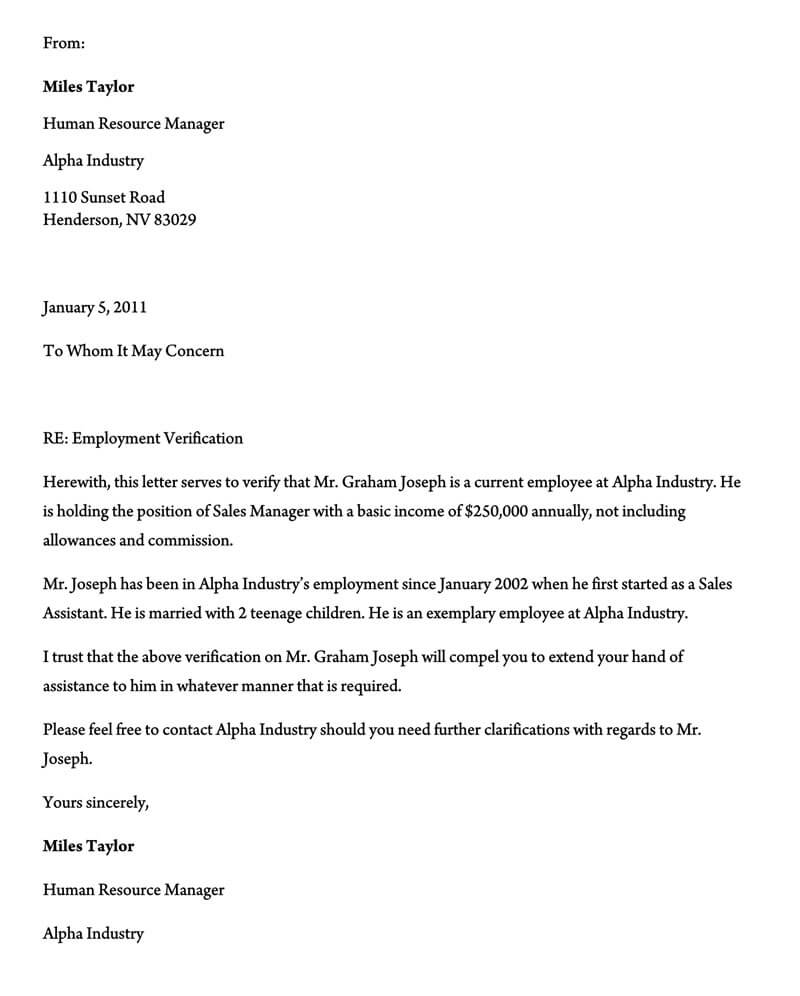
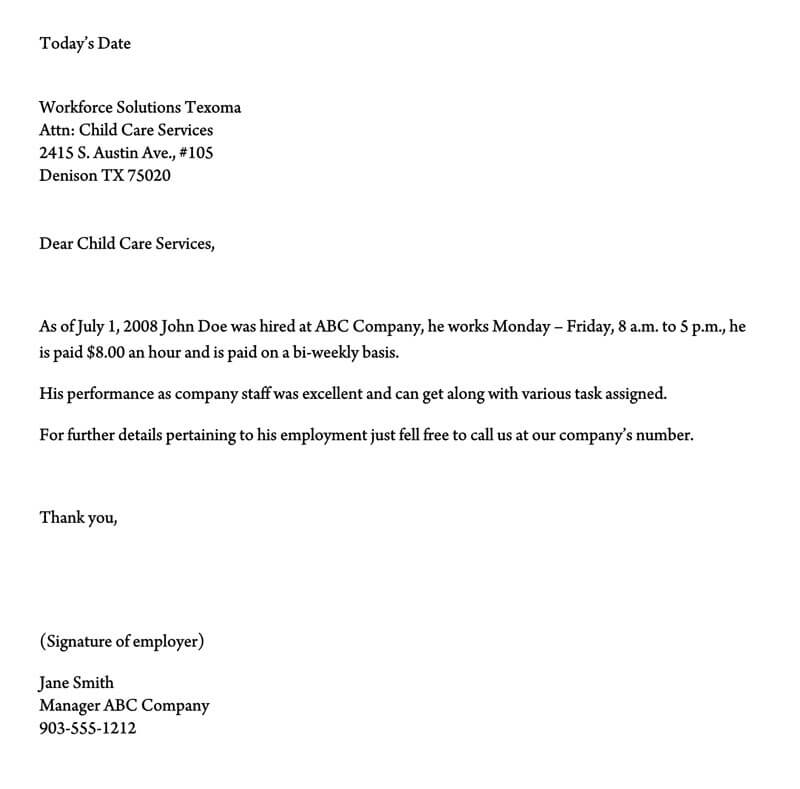
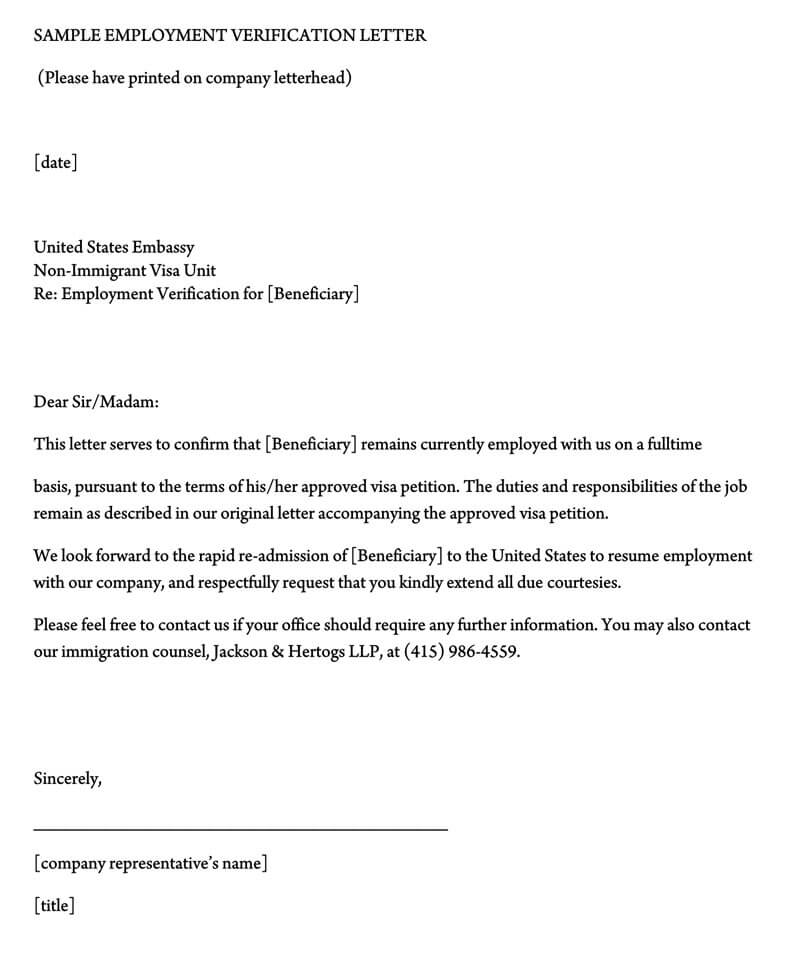
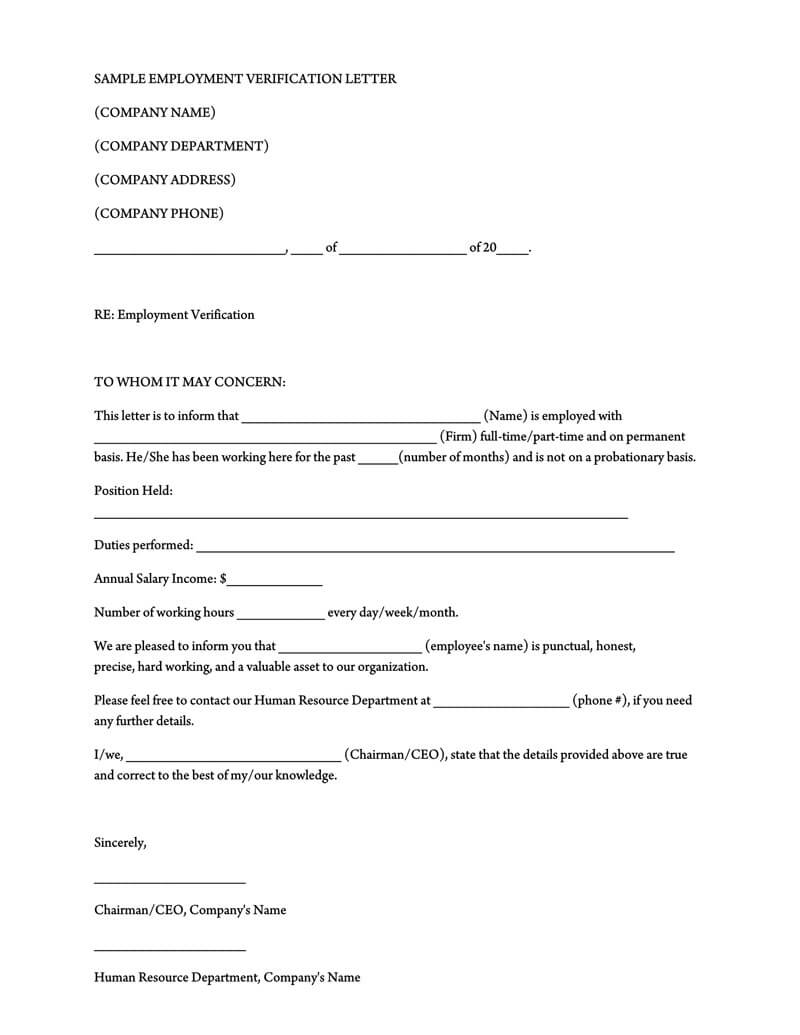
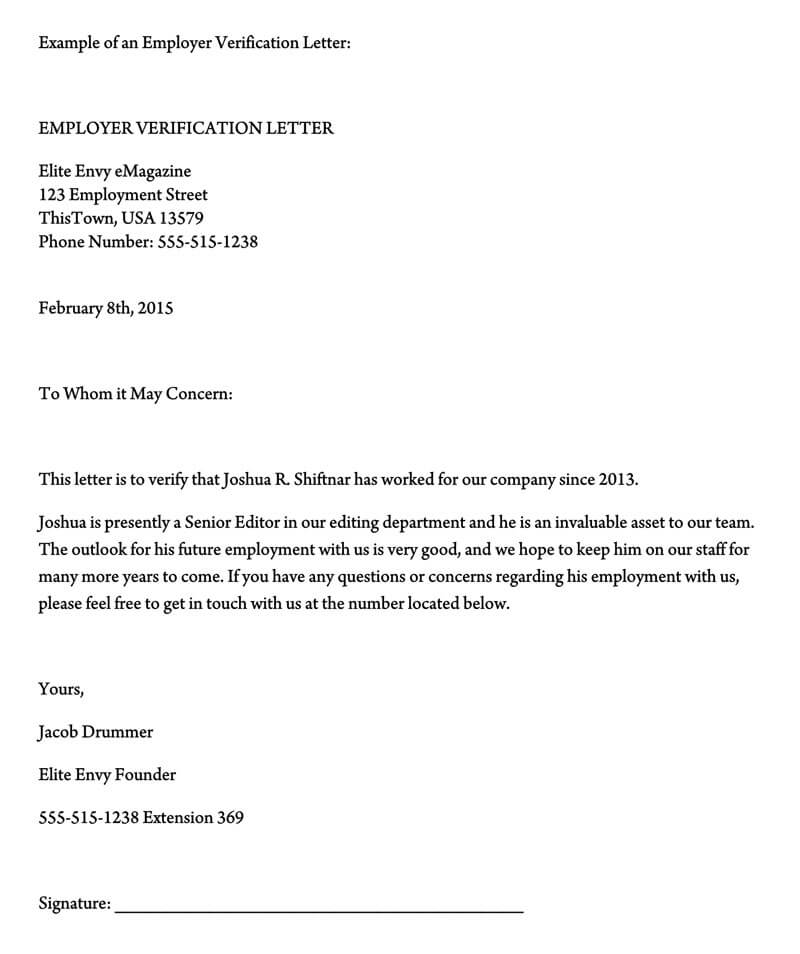
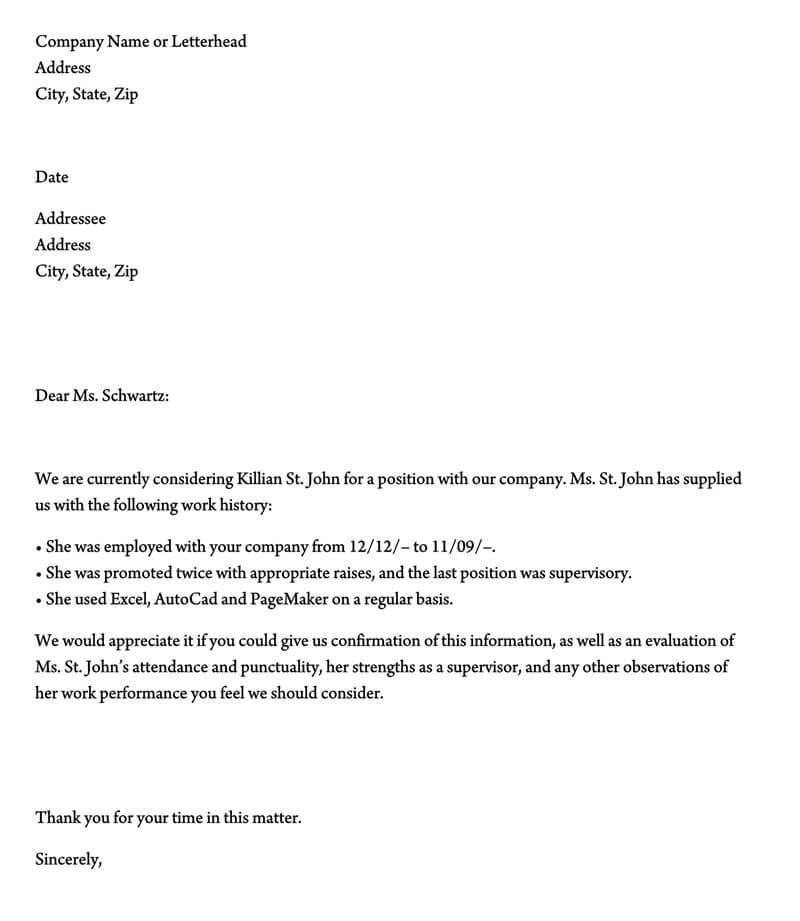
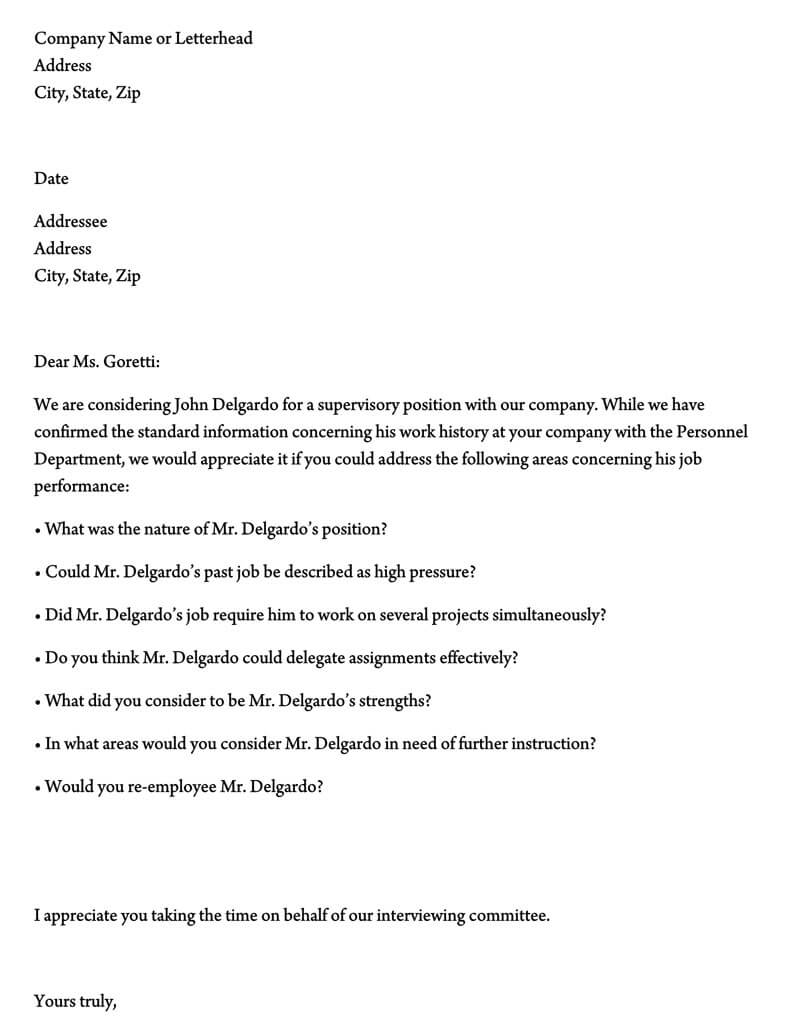
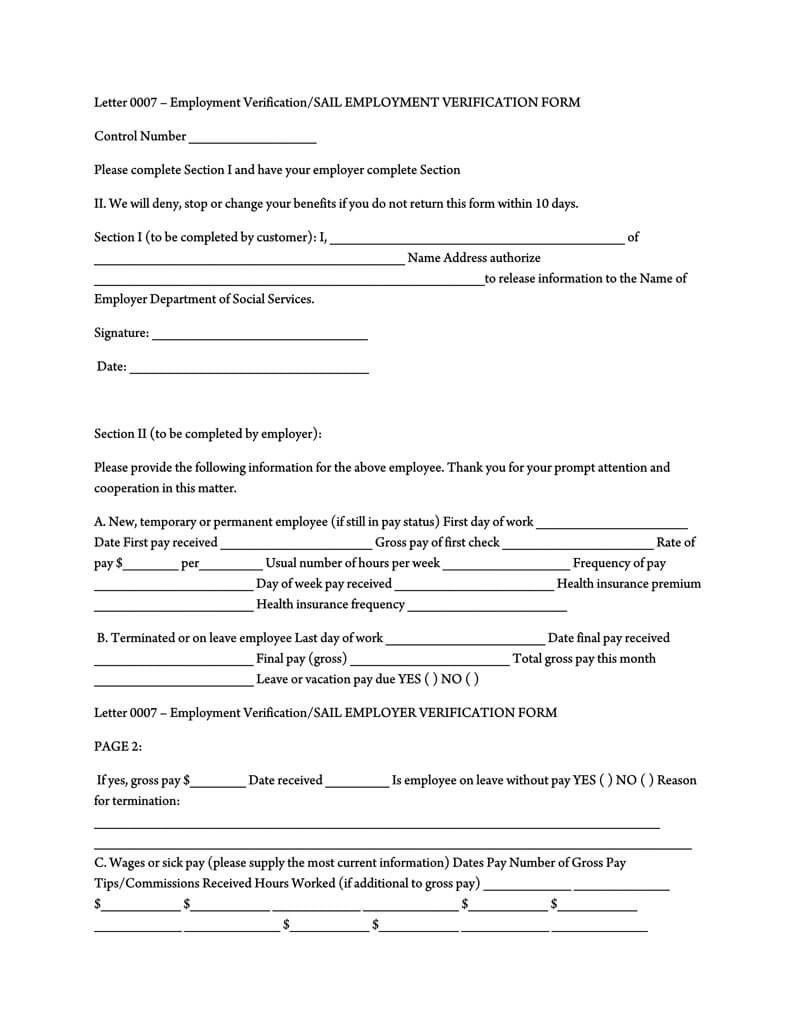
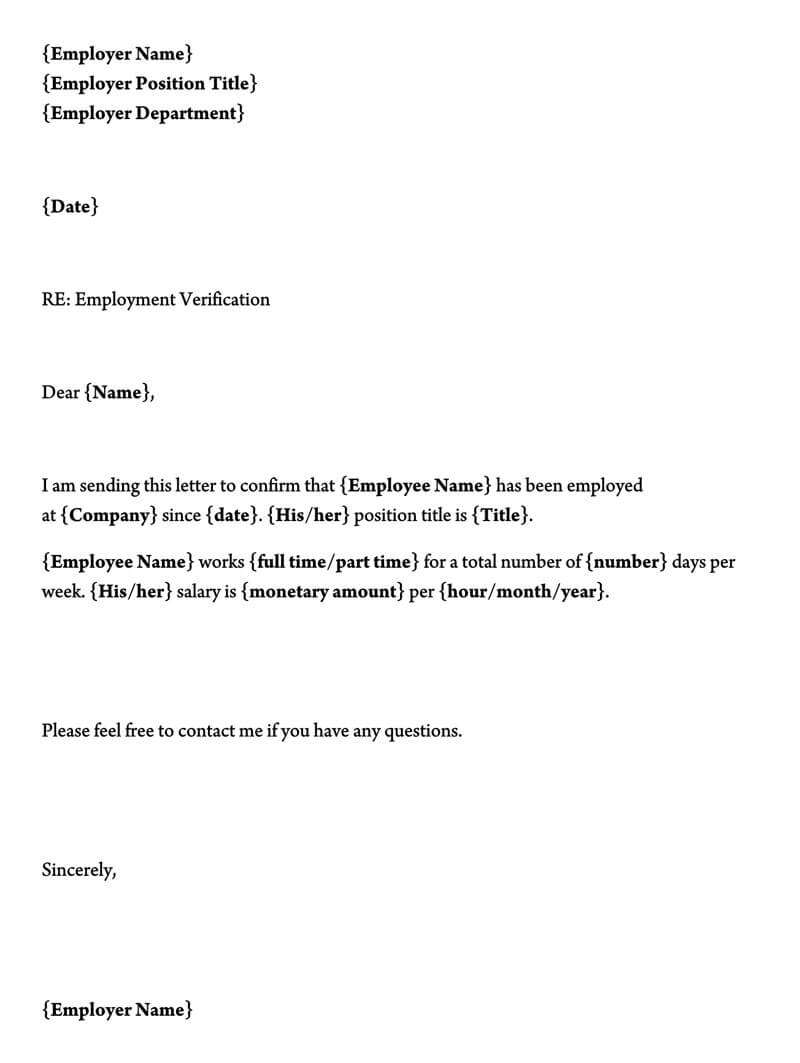
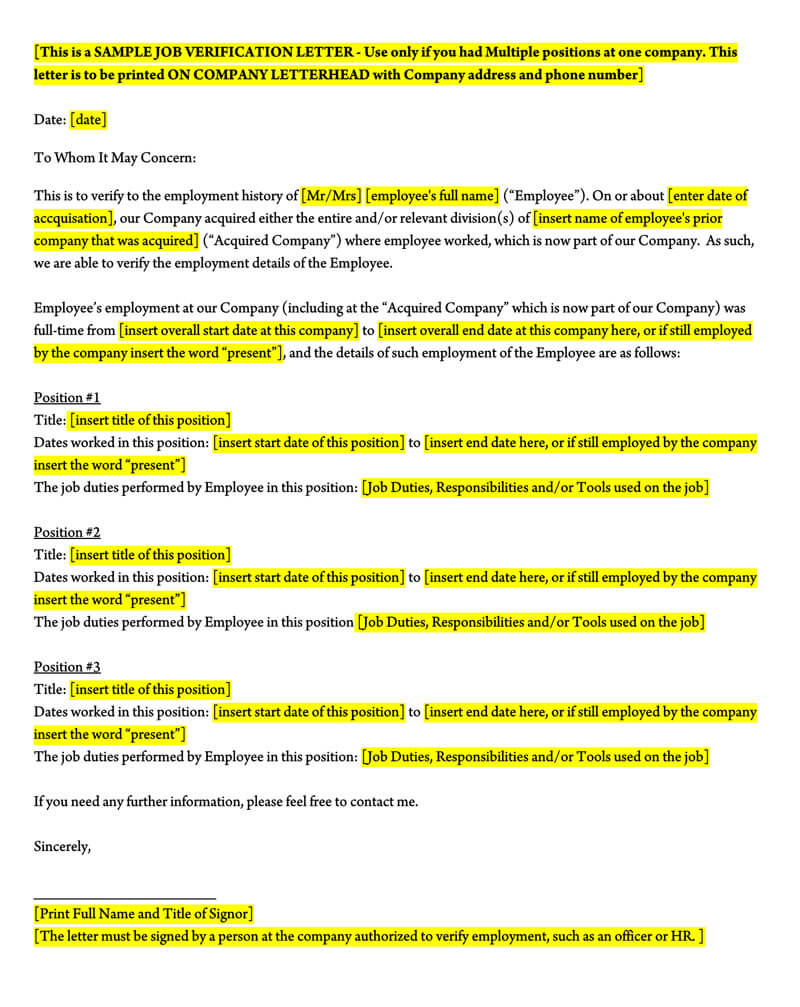
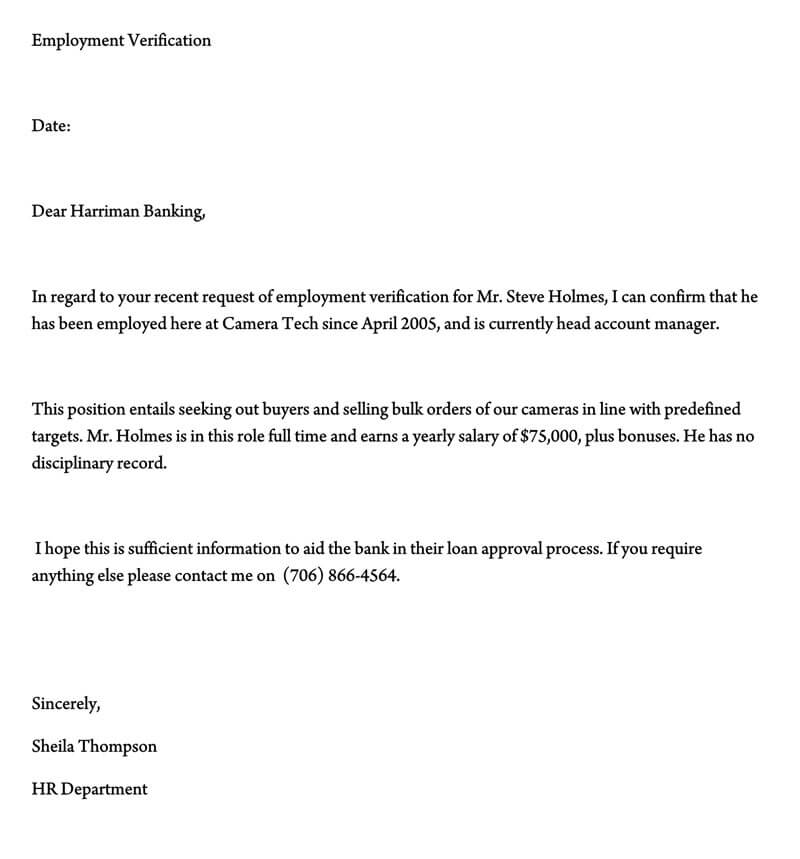
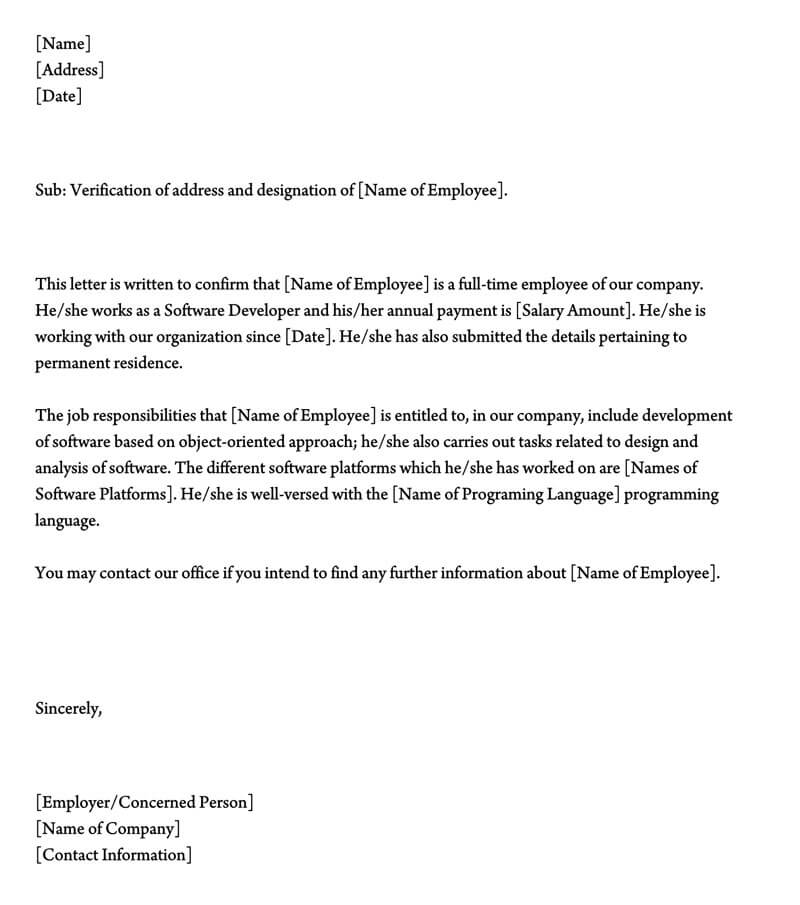
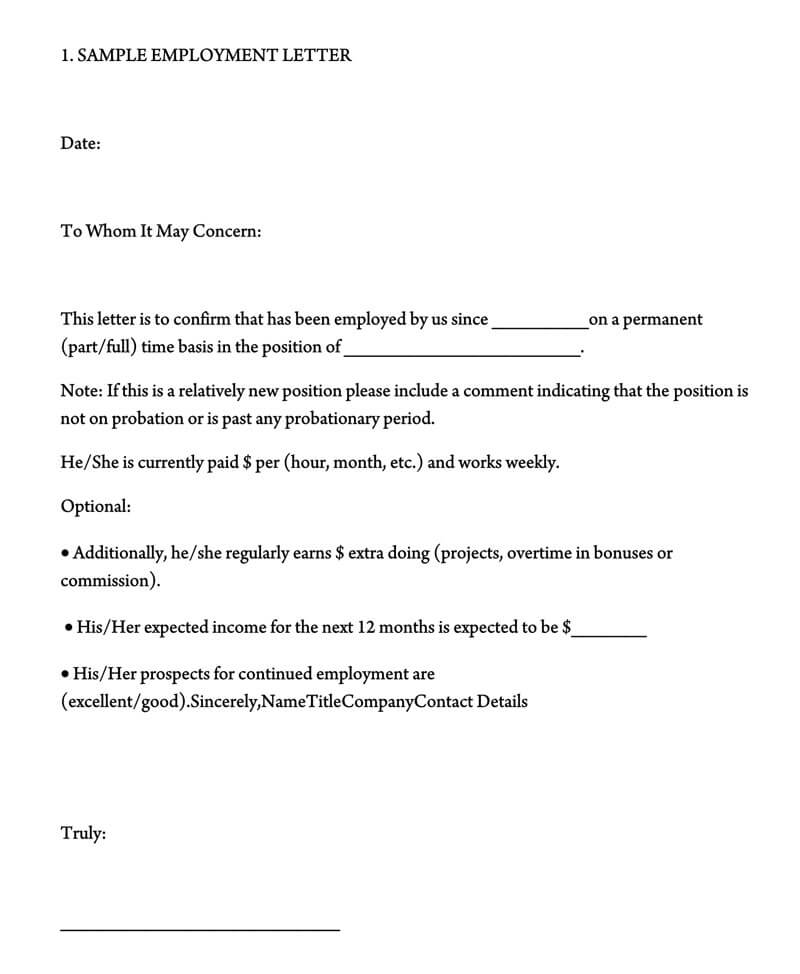
What Should I Leave Out?
It might seem like an odd question, but this is understandable. What should you leave out when writing this letter? The simple answer is this: any information that was not requested. If the prospective employer or institution has not asked for the person’s attendance or salary, don’t include that in the letter. While that is a bit nerve-wracking, here is a list of things that you should always leave out of the letter.
- Your opinion. You do not need to comment on the employee’s work ethic or how you personally feel about them. You just need to let this person know that your employee works for your company.
- The person’s salary or pay. Unless requested, do not include the salary of the person. Normally, they have to provide proof of income, or check stubs, to anyone who needs their financial information. You are not responsible for this.
- Personal information. If you include the personal information of your employee, you could actually be violating the law. The party that is requesting the letter will have all of the personal information that they need, so it is not up to you to include any of this.
If you leave these things out, your letter will be stronger and written in a more professional manner. Remember that the person’s impression of the letter is important.
Dos and Don’ts
When writing the letter, it is advisable to focus on being as accurate as possible while providing specific details only requested in the form. You may want to avoid writing extra information that may be unnecessary to the recipient.
Here are some Dos and Don’ts of writing the letter.
Dos
- Follow Business Letter Format: Ensure that your letter follows the correct format, starting with the employee’s address, your address as the employer, body paragraph, signature, and closing with your name.
- Be Concise: Ensure that you give information that is brief but that all the necessary information is available, and ensure that the letter has a formal tone.
- Include All Requested Information: Ensure that you have added all the additional requested information by the employee, such as payment details so that your letter can be satisfactory.
- Provide Your Contact Information: At the end of the letter, provide your contact information. This information is crucial as one can use the contact to request more details or clarifications concerning the letter.
- Edit and Proofread Before You Send: After completing the letter, ensure that you edit and proofread to avoid grammatical errors or mistakes that can alter the content’s meaning.
Don’ts
- Financial Information: If the employee has not requested financial details, do not include details such as monthly income and bonuses on the letter as they are considered personal information.
- Marital Status: On the letter, do not disclose an employee’s marital status, either married, divorced, or single.
- Personal Information: Avoid adding other personal details on the letter, such as the health conditions of the employee.
- Your Recommendation: When writing the letter, do not give your recommendations based on your views as this is an employment verification letter, not a job recommendation letter.
Frequently Asked Questions
Organizations are not mandated by any law to provide this letter, and thus an employer can fail to write a verification letter for a former employee. Despite this, most organizations respond to employees’ requests to provide them with the letters.
When a request comes from a federal or federal government agency, an organization must respond and provide this letter.
An effective letter should include the employer’s name, the employers’ address, the employee’s name, the employees’ full address, the date they were employed at the organization, their work durations, and the position they held in the organization. A signature of the employer and contact information is also added at the end of the letter.
As an employer, you cannot write this letter for an employee who has never worked for you. This is because such letters are based on facts and documented information, and the lack of this can lead to a suit in a court of law. At times an employee might send a request to the wrong address, and it is good for an employer to respond with information such as “I do not have any record of this employee in my organization.”











